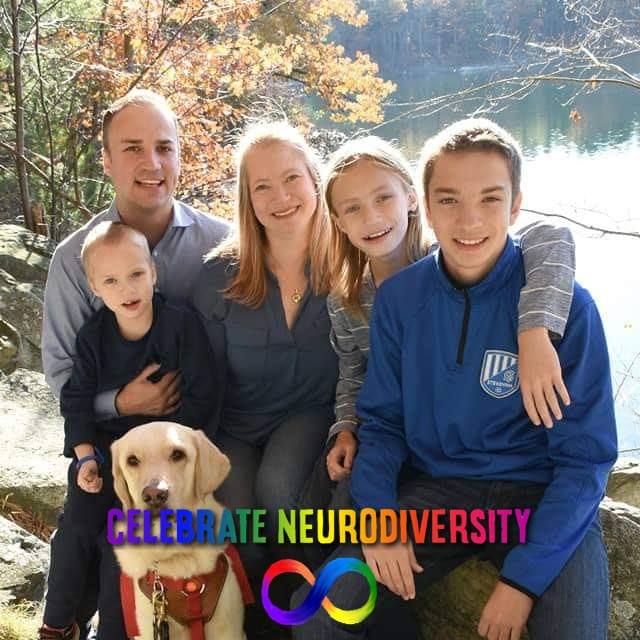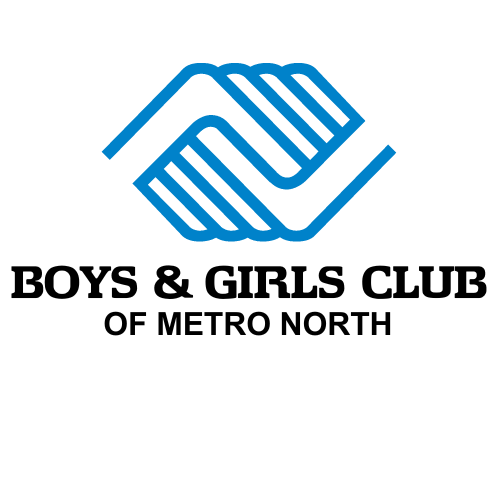Autism, Awesome! By Erin Alarcon

When the Boys and Girls Club first invited me to write something for Autism Awareness and Acceptance Month, I was thrilled. I didn’t have to think twice before saying yes. Since then, however, I have stopped and started writing numerous times. It’s not because I don’t have things to say. Rather, I recognize and own that the perspective I have to share is not that of an autistic individual. I cannot tell you what it is to live and experience this world as an autistic child, teen, or adult. I can share with you what I have learned through reading books, listening to presentations by autistic individuals, and following social media and blogs by autistic people, and my own experiences and observations as a neurotypical parent to autistic children.
You might notice I choose to use “autistic” rather than “person with autism.” There is a movement among many “actually autistic” adults to move from the person-first language, i.e. person with autism, to using the descriptor autistic. Using the word autistic is akin to describing a painter as artistic. It is part of who someone is, but it is not the whole of their being. Like any group of people, autistic folx are not a monolith and there is no unanimity about language choice; therefore, the best practice is to ask folx, or their parent/guardian when appropriate, what language they prefer.
Autism can pose some common challenges, but there is no mold for being autistic. Some people may experience speech delays, others may experience sensory sensitivities. Some may have gross or fine motor delays, and others may need extra time for processing. Some people also have other diagnoses, such as ADHD, anxiety, or seizure disorders. Some people experience all of these traits, others only some. As they say, when you’ve met one person with autism, you’ve met one person with autism. Often the challenges of autism are more about the way the neurotypical world receives and reacts to the autistic individual than anything else.
Autism offers extra gifts. Many autistic folx have “special interests.” These special interests go beyond being a mere hobby. These interests bring joy and stress relief to the individual. They are as varied as the people are. Some examples of special interests include trains; specialized trivia, such as sports, insects, snakes, and history; and, video games. My youngest son, David, loves trains. He could go to the Reading train station and wait and watch trains come through the station all day every day.
Autistic people see the world through a different lens. When my oldest son was young we went to the MFA. While I focused on the details of the paintings, he quietly pondered, “I wonder who made the frames.” Autistic individuals also tend to be honest, straightforward, and non-judgmental. They may have an exceptional memory of details and patterns, be highly skilled in art or music, and/or have a unique sense of humor.
More importantly than anything, autistic folks are people, who want and need the same things anyone else does: friendship, compassion, empathy, a sense of belonging and welcome, and unconditional love.
Several years ago we were in the Stoneham High School auditorium for our oldest son’s band concert. The sound of a hundred or so parents and siblings bounced off the concrete floors and metal-backed chairs. A squeak of a folding chair broke through the cacophony of voices every so often. Chairs scraped as student musicians moved them on stage. Percussionists tested the snare and bass. Flutes, clarinets, saxophones, trumpets, and trombones warmed up off stage. David lay on the floor between the rows with his service dog Mundo next to him, nuzzling him once in a while to help calm him. David would let out a cry every few minutes. His way of saying, this is just too much.
He lifted his head for just a moment and saw a girl, G, from his inclusion class at school. When he would leave his separate, smaller classroom to join the larger, neurotypical class for recess, morning meeting, or circle time, G would welcome David. Her older brother played soccer with one of David’s older brothers, so G and David also saw each other and played together during soccer games. David still engaged mainly in parallel play at the time, even though he was no longer a toddler. If it bothered G, she didn’t say anything. She just kept reaching out a metaphorical hand to David.
When David saw G move into the row in front of us before the concert started, he not only started to calm down, he also cheered up. She leaned over the chair and greeted him with a smile. He eventually got up off the floor and sat in his seat. David and G engaged in some silly play together. On and off throughout the concert, G looked back at David and smiled. This is what inclusion should look like.
I want to tell you: Be like G!
David, and other autistic children, may not carry on conversations or play the way neurotypical kids do. Some people may not talk. Others may not make eye contact. And others may not be able to read your body language well. There is a myth that autistic individuals don’t want to be part of a group or that they can’t empathize. The reality is that an autistic person’s way of trying to join a group or empathize with others may just look different than how you or I would do it. Please don’t count them out.
Invite them to join the group. Help facilitate their involvement whenever possible. If they are holding back or appear unsure of the social or game rules, offer them a turn or guidance. Don’t force eye contact or talking, and do be patient.
G met David where he was that day. She did not demand anything from him. She engaged him and showed him grace and love without any conditions. She welcomed him to be part of something and made him feel safe.
Autistic kids, like all kids, have lots of offer. Each autistic child, like every child, has special gifts and strengths. Get to know them. Get to know their interests, their strengths, like you would any other kid. Hopefully, we’ll move from one autism awareness and acceptance month each year to “Autism, Awesome!” year-round.
NB: If you are interested in learning more about autism, here are some helpful resources:
- Local Organizations: Asperger/Autism Network (www.aane.org); Autism Alliance (www.autismalliance.org); Communitas (www.communitasma.org)
- Autism Self Advocacy Network (www.autisticadvocacy.org)
- SPARK (https://sparkforautism.org)
- Look Me In The Eye, John Elder Robison
- The Autistic Brain and Thinking in Pictures, Temple Grandin
- https://www.ted.com/talks/temple_grandin_the_world_needs_all_kinds_of_minds
- On Twitter: Neurodivergent Rebel (@NeuroRebel); Dr. Lamar Hardwick (@autismpastor)

